Related Research Articles

The Kalmar Union was a personal union in Scandinavia, agreed at Kalmar in Sweden, that from 1397 to 1523 joined under a single monarch the three kingdoms of Denmark, Sweden, and Norway, together with Norway's overseas colonies.
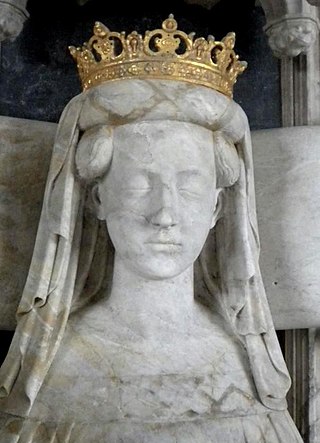
Margaret I was Queen regnant of Denmark, Norway, and Sweden from the late 1380s until her death, and the founder of the Kalmar Union that joined the Scandinavian kingdoms together for over a century. She had been queen consort of Norway from 1363 to 1380 and of Sweden from 1363 to 1364 by marriage to Haakon VI of Norway. Margaret was known as a wise, energetic and capable leader, who governed with "farsighted tact and caution," earning the nickname "Semiramis of the North". She was derisively called "King Breechless", one of several derogatory nicknames invented by her rival Albert of Mecklenburg, but was also known by her subjects as "Lady King", which became widely used in recognition of her capabilities. Knut Gjerset calls her "the first great ruling queen in European history."

Haakon VII was King of Norway from November 1905 until his death in September 1957.
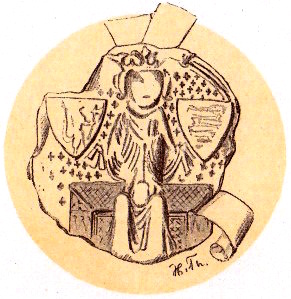
Olaf II of Denmark was King of Denmark as Olaf II from 1376 and King of Norway as Olaf IV from 1380 until his death. Olaf was the son of Queen Margaret I of Denmark and King Haakon VI of Norway, and grandson of kings Magnus IV of Sweden and Valdemar IV of Denmark.

Haakon IV Haakonsson, sometimes called Haakon the Old in contrast to his namesake son, was King of Norway from 1217 to 1263. His reign lasted for 46 years, longer than any Norwegian king since Harald Fairhair. Haakon was born into the troubled civil war era in Norway, but his reign eventually managed to put an end to the internal conflicts. At the start of his reign, during his minority, Earl Skule Bårdsson served as regent. As a king of the birkebeiner faction, Haakon defeated the uprising of the final bagler royal pretender, Sigurd Ribbung, in 1227. He put a definitive end to the civil war era when he had Skule Bårdsson killed in 1240, a year after he had himself proclaimed king in opposition to Haakon. Haakon thereafter formally appointed his own son as his co-regent.

Magnus IV was King of Sweden from 1319 to 1364, King of Norway as Magnus VII from 1319 to 1355, and ruler of Scania from 1332 to 1360. By adversaries he has been called Magnus Smek.
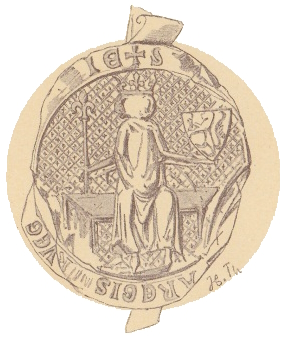
Haakon VI of Norway, also known as Håkan Magnusson, was King of Norway from 1343 until his death and King of Sweden between 1362 and 1364. He is sometimes known as Haakon Magnusson the Younger to distinguish him from his great-grandfather, Haakon V.

Haakon V Magnusson was king of Norway from 1299 until 1319.
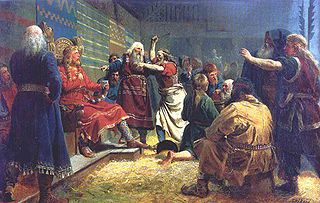
Haakon, also spelled Håkon, Hakon, Håkan, or Háukon or Hákon, is an older spelling of the modern Norwegian form of the Old Norwegian masculine first name Hákon meaning "High Son" from há and konr. An old English form is Hacon as in Haconby, Hacon's Village. The name appears in Scottish Gaelic as Àcainn, as seen in the place-name Kyleakin, meaning 'Haakon's Narrows', being named after King Haakon IV of Norway.

Blanche of Namur was Queen of Norway and Sweden as the wife of King Magnus VII / IV.
Haakon Sverresson was King of Norway from 1202 to 1204.
The Kingdom of Norway as a unified realm dates to the reign of King Harald I Fairhair in the 9th century. His efforts in unifying the petty kingdoms of Norway resulted in the first known Norwegian central government. The country, however, soon fragmented and was collected into one entity in the first half of the 11th century, and Norway has retained a monarchy since that time. Traditionally, it has been viewed as being ruled by the Fairhair dynasty, though modern scholars question whether the eleventh century kings and their successors were truly descendants of Harald.

The Bagli Party or Bagler was a faction or party during the Norwegian Civil Wars. The Bagler faction was made up principally of the Norwegian aristocracy, clergy and merchants.

The Fairhair dynasty was a family of kings founded by Harald I of Norway which united and ruled Norway with few interruptions from the latter half of the 9th century. In the traditional view, this lasted until 1387, however, many modern scholars view this rule as lasting only three generations, ending with Harald Greycloak in the late 10th century. The moniker "Fairhair dynasty" is a retrospective construction: in their lifetime what little traces there are refer to them consistently as "Ynglings".

Eric Magnusson was a Swedish prince, Duke of Svealand, Södermanland, Dalsland, Västergötland, Värmland and North Halland and heir to the throne of Sweden. His son, Magnus, became king of Norway and Sweden.

Visborg (Wisborg) refers to a fortress in the town of Visby on the Swedish island of Gotland. Successive fortresses were built in Visby, though Visborg is usually in reference to the castle built here by King Eric of Denmark, Norway, and Sweden.
A referendum on retaining the monarchy or becoming a republic was held in Norway on 12 and 13 November 1905. Voters were asked whether they approved of the Storting's decision to authorise the government to make the offer of the throne of the newly self-ruling country. The Storting had wanted to offer the throne to Prince Carl of Denmark, but the prince insisted that the Norwegian people have a chance to decide whether they wanted to retain a monarchy.

The Treaty of Lödöse was a peace treaty between the Swedish king Eric XI and the Norwegian king Haakon IV. The treaty was negotiated between King Haakon and the Jarl of Sweden, Birger Magnusson, in the town of Lödöse, during the summer of 1249. The main purpose of the treaty was to prevent mutual hostility from escalating into war. Some factions of the Swedish nobility wanted to attack Norway in retribution for a raid by King Haakon, which had targeted Norwegian rebels in the Swedish province of Värmland 24 years earlier.
Ingeborg Eriksdotter was Queen of Norway and the wife of King Magnus VI. She was born a Danish princess, daughter of Eric IV of Denmark. As queen dowager, she played an important part in politics during the minority of her son King Eirik II of Norway in 1280-82.
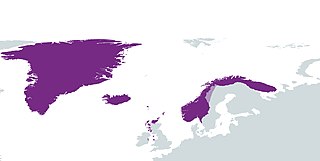
The term Norwegian Realm and Old Kingdom of Norway refer to the Kingdom of Norway's peak of power at the 13th century after a long period of civil war before 1240. The kingdom was a loosely unified nation including the territory of modern-day Norway, modern-day Swedish territory of Jämtland, Herjedalen, Ranrike (Bohuslän) and Idre and Särna, as well as Norway's overseas possessions which had been settled by Norwegian seafarers for centuries before being annexed or incorporated into the kingdom as 'tax territories'. To the North, Norway also bordered extensive tax territories on the mainland. Norway, whose expansionism starts from the very foundation of the Kingdom in 872, reached the peak of its power in the years between 1240 and 1319.
References
- ↑ Bjørgo, Narve. "Håkon Håkonsson Unge". In Helle, Knut (ed.). Norsk biografisk leksikon (in Norwegian). Oslo: Kunnskapsforlaget. Retrieved 9 November 2012.